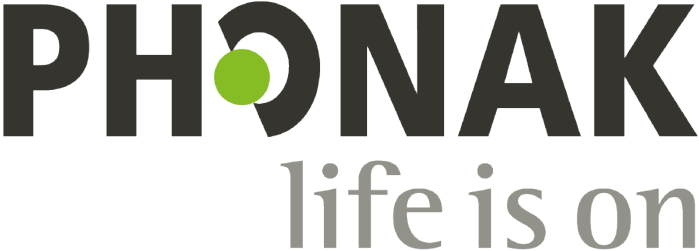
< back
Study from the University of Melbourne shows: Children with a history of middle ear diseases should be tested for spatial listening ability at school entry
Staefa, Switzerland /Melbourne, Australia - November 3, 2014 - In a study published today children with a history of middle ear disease in early childhood were found to suffer from binaural speech perception deficits that persist for years after the disease episode. Awareness of the existence of spatial listening difficulties, which lead to poor understanding of a teacher’s voice in a noisy classroom, allows for remedial strategies such as auditory training, the use of assistive listening devices such as the Phonak Roger system for education, and environmental modifications to be employed. It is recommended that children with a known history of middle ear disease be assessed for spatial listening ability at school entry. LiSN-S (Listening in Spatialized Noise – Sentences) by Phonak is a diagnostic test that assesses the spatial processing in patients.
The study by Gary Rance and Dani Tomlin from the University of Melbourne, Australia, was published in Ear & Hearing, a peer reviewed audiology and speech language pathology trade journal*. The research showed that the risk of perceptual problems is increased with earlier onset and longer disease duration. Affected children are likely to be disadvantaged in the classroom as the ability to isolate auditory information, such as the teacher’s voice, from the background noise is impaired. Early identification and awareness of the long-term effects of otitis media or middle ear infection support the need for decisive medical management of this disorder.

”Middle ear disease is the most common reason for physician referral in children, and most youngsters suffer at least one episode in the first 2 years of life. While middle ear disease resolves quickly in most cases, our research found that temporary hearing fluctuations in the pre-school period can have lasting effects on auditory processing resulting in speech perception deficits severe enough to disrupt everyday communication and academic progress,“ according to professor Rance.
Martin Grieder, Group Vice President Phonak, adds: ”Our commitment to scientific research in the field of audiology is the way forward to helping children with a hearing loss. Professor Rance’s work shows how early childhood middle ear disease can have serious consequences at school age years later. We are proud to help professionals with the diagnostic test LiSN-S, developed by Dr. Harvey Dillon and Dr. Sharon Cameron from National Acoustics Laboratories in Australia, and to help school children, teachers, parents and educational audiologists with the world’s standard in assistive listening devices, Roger.”
About LiSN-S
LiSN-S is a diagnostic tool for the acoustic assessment of children. LiSN-S allows clinicians to measure how well a child uses the spatial information in sound to understand speech in noise. Spatial information is available in sound when for instance a talker is located in front of a listener and distracting talkers (noise) are located somewhere else in space. Inability to use this information has been found to be a leading cause of auditory processing disorder (APD). Developed by Dr. Sharon Cameron and Dr. Harvey Dillon of National Acoustic Laboratories of Australia (NAL) and distributed by Phonak, LiSN-S enables the audiologist to simulate a range of different noise environments. Testing takes about 20 minutes and involves patients having to repeat short sentences presented under headphones in the presence of background noise.
About Roger
Roger by Phonak is the digital standard in assistive listening devices for listeners of all ages. Roger systems consist of a wireless microphone and small Roger receivers that can be attached to a user’s hearing aids, or in the case of auditory processing disorder small receivers worn behind the ear. It allows listeners to hear across distance and in noise. The usage of assistive listening devices such as Roger is considered a corner stone in the audiological intervention for children, whilst more and more adults start to use such systems as well.
About otitis media
Otitis media (Latin for "inflammation of the middle ear") is the medical term for middle ear inflammation. There are two major types of otitis media: acute otitis media and otitis media with effusion. The former is usually symptomatic, especially ear pain, whereas the latter is most commonly without acute symptoms. Chronic suppurative otitis media is less common and is a complication of acute otitis media, and is associated with perforation of the ear drum, with or without drainage; all three of these conditions are most frequently associated with hearing loss. Otitis Media is very common in childhood but can occur at any age.
*Dani Tomlin and Gary Rance. Long-Term Hearing Deficits After Childhood Middle Ear Disease. Ear & Hearing, November 3, 2014.
About Gary Rance
Associate Professor Gary Rance is an audiologist, and teacher at the University of Melbourne. He is Director of Academic Programs for the Department of Audiology & Speech Pathology, coordinates the Master of Clinical Audiology Program and is currently the Principle Research on a number of national and international research projects. His research areas have included various aspects of auditory evoked potential measurement (notably the clinical application of auditory steady-state responses), cochlear implant outcomes in children, and the perceptual characterization of hearing impaired children. Most recently, he has been a leader in the field of auditory neuropathy spectrum disorder (ANSD) responsible for the first publications to describe this form of hearing deficit in newborn babies.

Pressemitteilung: Study from the University of Melbourne
Children with a history of middle ear diseases should be tested for spatial listening ability at school entry
About Phonak
Headquartered near Zurich, Switzerland, Phonak, a member of Sonova Group, has developed, produced and globally distributed state-of-the-art hearing systems and wireless devices for more than 60 years. The combination of expertise in hearing technology, mastery in acoustics and strong cooperation with hearing care professionals allows Phonak to significantly improve people’s hearing ability and speech understanding and therefore their quality of life.
Phonak offers a complete range of digital hearing instruments, along with complementary wireless communication systems. With a worldwide presence, Phonak drives innovation and sets new industry benchmarks regarding miniaturization and performance.
For more information, please visit www.phonak.com, www.phonakpro.com or contact:
Kathy Bühler
Product Communications
Phone: +41 58 928 48 44
E-mail: kathy.buehler@phonak.com
Phonak AG
Laubisrütistrasse 28
CH - 8712 Stäfa
Phone: +41 (0)58 928 01 01
Fax: +41 (0)58 928 20 11
